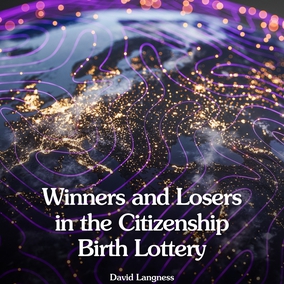The views expressed in our content reflect individual perspectives and do not represent the authoritative views of the Baha'i Faith.
In the past century, science has completely overhauled the entire concept of the macrocosm in cosmology—as well as the microcosm, in particle physics.
In previous essays in this series, we’ve covered the major steps in the evolution of particle physics in its study of refinement. Major discoveries have also taken place in the evolving field of cosmology and astrophysics, radically altering the scientific view of refinement as we consider an ever more expansive universe capable of mimicking the properties of spiritual reality in its own way.
For example: the theory of the “Big Bang” was conceived in the 1940’s, became somewhat confirmed in the 1960’s, and became more scientifically entrenched in the late 1980’s and early 1990’s. According to this theory, the observable universe began with a massive explosion which made it expand rapidly, has now sped about fifteen billion light years away from us in any direction, and grows bigger by the nanosecond. Regressively speaking, then, we might conclude that the universe is obviously some fifteen billion years old. Or is it?
To name and to quantify is an anthropomorphic device for attaining cosmological comfort, even, perhaps, for gaining a sense of superiority or control. The vanity of science virtually requires this of its adherents so that they might persevere in the face of what would otherwise seem an unapproachable reality: a cosmos so vast, mysterious and unknowable that it becomes tantamount to a metaphysical realm.
All scientists encounter this one stark message as they search for some final encompassing entity or form in the macrocosmic view of creation—that however sophisticated we may in the future become in our capacity to study the universe, it will ever be beyond any final or complete human analysis or comprehension.
Now while this verity might discourage some scientists and even scientific thought itself, it is perfectly logical in the context of a physical creation whose very existence emulates in metaphorical form the pre-existent ideas, forms, virtues, and verities in the non-composite metaphysical reality of the world of the spirit. Therefore, if we can learn about one reality from the other, given the tenuous speculations about the nature and origin of the cosmos, we would do well to turn our discussion to a brief examination of some of the problems with contemporary theories of cosmology and how these can be informed, if not resolved, by the spiritual verities set forth in the Baha’i teachings.
The most obvious problem with the big bang theory from a Baha’i perspective is that most versions of this theory hypothesize a single point of beginning, whereas the Baha’i teachings affirm repeatedly that material reality has no point of beginning:
Know that it is one of the most abstruse questions of divinity that the world of existence—that is, this endless universe—has no beginning.
… absolute non-existence lacks the capacity to attain existence. If the universe were pure nothingness, existence could not have been realized. Thus, as that Essence of Oneness, or divine Being, is eternal and everlasting—that is, as it has no beginning nor end—it follows that the world of existence, this endless universe, likewise has no beginning. … – Abdu’l-Baha, Some Answered Questions, newly revised edition, pp. 207-208.
The universe, then, as Baha’is understand it, has existed eternally in the past, regardless of how infinitely it has evolved or changed in form.
For instance: the age of the universe is calculated by some as having begun roughly ten billion light years ago. However, certain stars have been calculated to be at least sixteen billion light years old. Clearly something is amiss.
But a more mundane question also arises: If it happened, what precipitated the big bang? If it was something physical, then something physical must have preceded that point in time. If it was metaphysical, then we suddenly introduce into science the existence of metaphysical reality and, even more disturbing to some scientists, a causal relationship between the two realities. What is more, if we allow that such a causal relationship occurred once, then could it not occur twice, or constantly, or infinitely?
Furthermore, could there have been another “bang” which preceded this one, in which matter collapsed back on itself until it reached a point of critical mass and exploded again? In other words, could we be witnessing Big Bang Number Twenty-Seven? If so, then the universe could still be infinite in time. As such, if viewed from a timeless reality or with a time-lapse lens, the universe would appear as a vast heart pulsing in the matrix of—of what?
Possibly the big bang theory has had its fifteen minutes of fame, eclipsed since Stephen Hawking published his Brief History of Time in 1988. But we now have the “cold big bang theory” to explain how all this particulate matter that expanded in the first second or so formed into solar systems and galaxies. We have the “inflationary theory” to explain how an expanding universe creates space (instead of having space already there in which matter can expand). We have “superstring theory” which adds a complex of other dimensions to Einstein’s meager four dimensions.
Of course, the idea of a finite universe or “closed system” has never been universally accepted. To presume that the universe is limited to what we can presently observe would be totally arbitrary and needless, as well as the grossest sort of hubris. Certainly the Baha’i writings make clear that such is not the case, that the solar systems are infinite:
Just as particulars are infinite in number, so also the vast universals and the great realities of the universe are without number and beyond computation. The Dawning Places of Unity, the Daysprings of Singleness and the Suns of Holiness are also sanctified beyond the bounds of number, and the luminous spiritual worlds are exalted above limits and restrictions. In like manner the worlds of bodily existence the mind of no man can reckon nor the understanding of the learned comprehend. Consider the following well-known tradition and examine its meanings indicative of the vastness of the cosmos and its awesome limitless expanse: “God, exalted be He, fashioned one hundred thousand, thousand lamps and suspended the Throne, the earth, the heavens and whatsoever is between them, even Heaven and Hell—all of these in a single lamp. And only God knows what is in the rest of the lamps.” The fact that philosophers and sages have posited limits and restrictions for such matters is to be explained by the limitations of people’s minds and perceptions and the blindness of the followers of allusions, whose natures and intellects have been rendered dull and inanimate by the interposition of many veils. – Abdu’l-Baha, The Tablet of the Universe, provisional translation, p. 3.
If, then, the physical “worlds” or systems are beyond comprehension or limit, as are the “Dawning Places of Unity, the Daysprings of Singleness and the Suns of Holiness” (the divine messengers), then why should we even consider trying to study the macrocosm?
Here again, the answer is the same as the reason why we should study the microcosm—if the physical world in all its properties is an outward mirror, sign or metaphor of the unseen world, and a complete expression at that—much as the body and actions of the human being give evidence of the soul’s reality and condition—then the fundamental principle by which knowledge of the unseen reality can be obtained is to begin with the premise that to understand the operation of a particular part of the Chain of Being or a particular ingredient in universal composition is to gain insight into all the other levels on the chain of being and all other compositions, since universals explain particulars and particulars explain universals:
Know then that those mathematical questions which have stood the test of scrutiny and about the soundness of which there is no doubt are those that are supported by incontrovertible and logically binding proofs and by the rules of geometry as applied to astronomy, that are based on observations of the stars and careful astronomical research, and are in conformity with the principles of the universal themes expounded in the divine sciences. For it is by applying the outward world to the inner, the high to the low, the small to the large, the general to the particular that, with abundant clearness, it becometh apparent that the new rules arrived at by the science of astronomy are in closer accord with the universal divine principles than the other erroneous theories and propositions …. – Ibid.
We can see in this concept of refinement, whether we descend into the realm of particle physics or ascend into the realm of vast celestial cosmology, that the Creator has fashioned an infinitely complex classroom for our training, a classroom whose lessons will never become tedious because they will never be completely or finally understood. They will constantly challenge humankind on whatever planet this special being lives, and at whatever stage of evolution this fruit of creation may be.
Therefore, while physical creation is clearly the product of and subordinate in station to the unseen spiritual reality which it manifests, we grievously err to value it solely as a breeding ground where souls take on identity and receive a simplistic or foundational education to prepare them for the next stage of their potential growth in the realm of the spirit. Clearly the physical world is not merely a shadowy metaphor of spiritual reality. In its capacity to manifest even the most refined expressions of metaphysical reality, it is indeed the “exact counterpart” of the spiritual world, and it co-exists with that reality in an infinite, ceaseless, integrated, and organic enterprise. Physical reality, in short, has inherent divine significance in itself, because every created thing bears the spiritual sign or imprint of the Creator. Consequently, each created being and each and every composition of created beings is unique in its expression of divine reality.
You May Also Like
Comments

















https://phys.org/news/2015-02-big-quantum-equation-universe.html